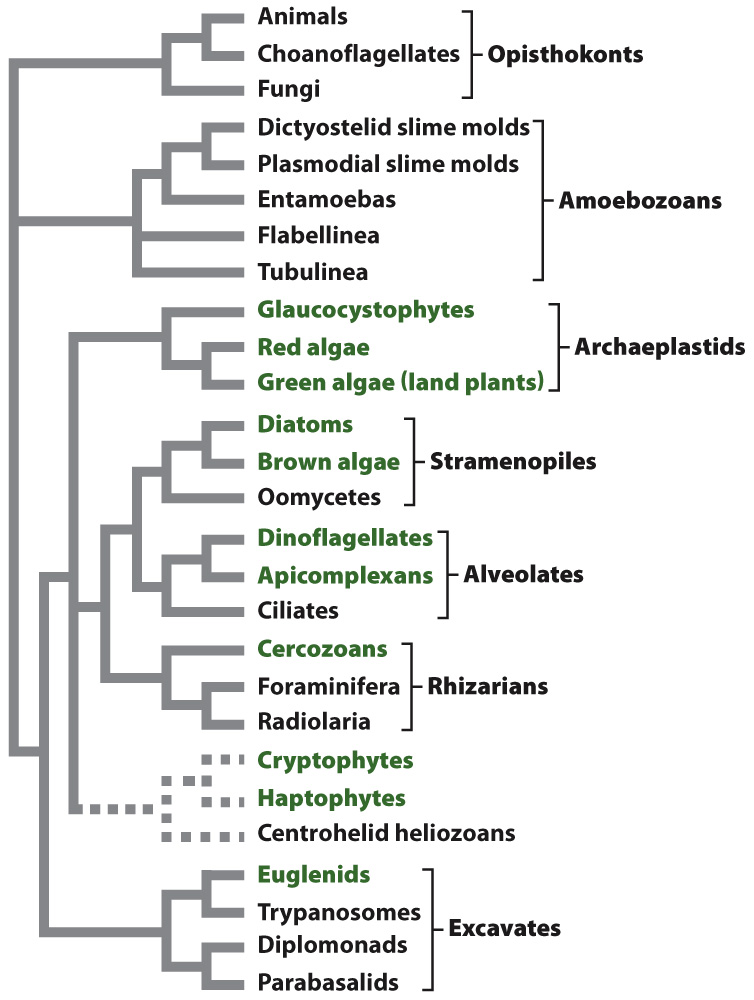27.3 Eukaryotic Diversity
Historically, Domain Eukarya was divided into four kingdoms: plants, animals, fungi, and protists. Plants, animals, and fungi received special consideration for the obvious reason that they include large and relatively easily studied species. All remaining eukaryotes were grouped together as protists, which were defined as organisms having a nucleus but lacking other features specific to plants, animals, or fungi. The term “protist” is frowned on by some biologists because it doesn’t refer to a monophyletic grouping of species—
Two other terms scorned by some biologists but embraced by ecologists are “algae” and “protozoa.” Algae are photosynthetic protists. They may be microscopic single-
Protist cells exhibit remarkable diversity. Some have cell walls, while others do not. Some make skeletons of silica (SiO2) or calcium carbonate (CaCO3), and others are naked or live within tests, or “houses,” constructed exclusively of organic molecules. Some are photosynthetic, while others are heterotrophic. Some move by beating flagella, and others, like Amoeba, can extend fingers of cytoplasm, called pseudopodia, to move and capture food. Most are aerobic, but there are anaerobic protists as well. Surprisingly, most of these distinctive features have evolved multiple times and so do not define phylogenetically coherent groups. As a result, our understanding of evolutionary pattern in Eukarya had to wait for the molecular age.
563
Fig. 27.9 shows a phylogenetic tree of eukaryotes as biologists currently understand it. As in the case of Bacteria, it is easier to identify major groups of Eukarya than to establish their evolutionary relationships to one another. Molecular sequence comparisons consistently recognize seven major groups, called superkingdoms, noted in the figure. Animals fall within one of these superkingdoms, the Opisthokonta, whereas plants fall within another, the Archaeplastida. Most, but not all, of the divisions into these major eukaryotic branches are strongly supported by data from genes and genomes. A few groups, notably the cryptophytes, haptophytes, and centrohelid heliozoans, seem to wander from position to position from one phylogenetic analysis to the next, sometimes moving together, sometimes separately. Whether the well-

In the following sections, we introduce the major features of eukaryotic diversity. The species numbers we present indicate only the taxonomic diversity that is known to us; most protistan species remain unknown. Many biologists estimate that only about 1 in 10 protist species has been described so far. As this is also the case for animals and fungi (but arguably not for land plants because they are all visible to the naked eye), the relative numbers of species within different superkingdoms may reflect something like the actual distribution of biodiversity among eukaryotes.